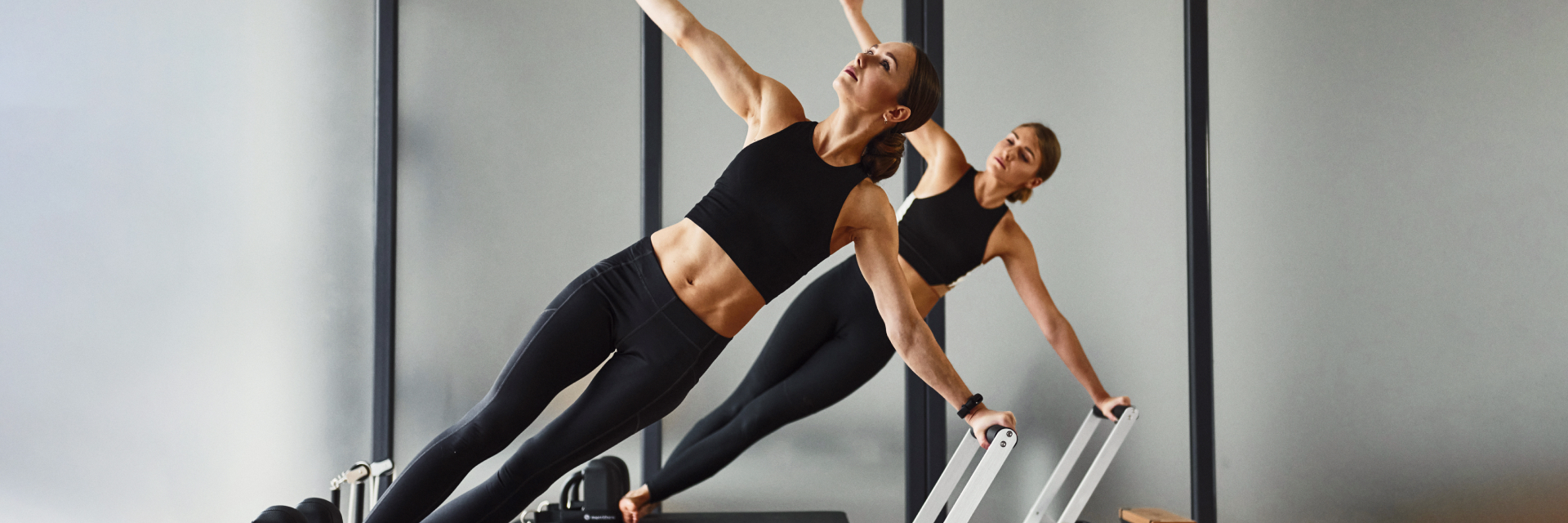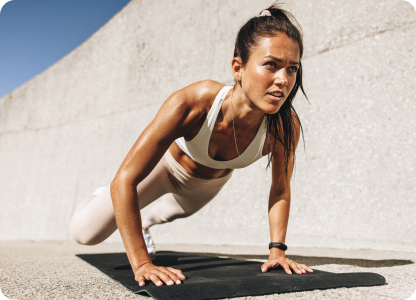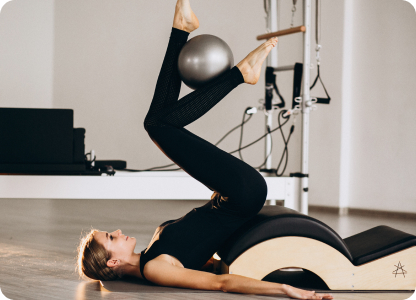Pilates nowadays is a common and popular fitness class and practice. It is typically a blend of several repetitions of exercises, sometimes done with additional tools, and with a high focus on breathing. So, it is a great way to work on flexibility and muscle tone.
Many think that Pilates will help them look leaner and taller, but is that really the case?
Pilates 101
Let’s first talk about the history of pilates. It is only a little over 100 years old, having been created in the last century by Joseph Pilates. By studying a mix of yoga, martial arts, and ancient exercises, he created a series of exercises used to help World War I soldiers recover1.
There are a few components to every Pilates exercise2:
- Breath – the practice involves close attention to breathing through the exercises;
- Stabilization and proper body alignment – working on keeping the neck, ribs, pelvis and scapulae in proper form is key to the exercises;
- Control – the exercises use a controlled range of motion;
- Engaging the deep core – Pilates focuses on a stable and engaged core, using the deep part that crunches won’t necessarily reach.
Pilates can be done on a mat or on specialized equipment, like a Reformer. The bulk of the resistance in the exercises comes from body weight3. So, are they effective at building muscles?
Pilates vs Strength training
Strength or resistance training is a key aspect of health and fitness. Strong muscles and bones support a healthy body and allow us to move and carry out our daily tasks.
Long-term regular Pilates training can increase muscle strength. However, it appears that the results are not significantly different to other types of exercise4. Therefore, if your primary goal is to grow a lot of muscle, you might be better off with a typical resistance program. However, if you’re looking to strengthen without growing lots of muscle, Pilates can be a good option.
Pilates can be a great addition to a strengthening routine, as the focus on a strong core can improve maximal strength. That is because our core and trunk are essential for controlling movement and supporting motion5. The practice supports proper breathing and posture. This translates into other beneficial effects, such as decreasing perceived effort during exercise, injury prevention and achieving maximum contraction of the muscle6.
Additional benefits
There is a range of additional benefits that this form of exercise provides:
- Greater balance7;
- Better functional fitness – meaning that we are better able to carry out movements needed in our daily lives8;
- Altered body composition – it supports better MBI and lowers the amount of fat in the body9;
- Supporting flexibility10;
- Helps proper posture11;
- Strengthens your immunity12.
Alongside these great benefits, Pilates is also great for the mind. In fact, it can improve mood13 and support your cognition14. For athletes, Pilates can support performance, for example by improving speed15.
Pilates and ageing
Pilates has been looked at as a potential aid to support the ageing body. As we age, our muscle strength decreases, affecting posture, balance, and joint health16. For women, ageing adds on an extra challenge – due to hormonal changes women’s muscles and bones tend to be more affected17.
Ageing people might have concerns of lower back pain, and exercise is thought to be a great solution to that18. Pilates can help with reducing this pain, alongside pain in neck and knees19. In addition, this exercise form supports muscle strengthening and increased flexibility and balance20. For women, Pilates can improve bone density, preventing injury21.
The verdict
Pilates seems to be a good strengthening option for people who do not do strengthening exercises and for the elderly. This exercise can support those that do strength training in engaging their core, helping them increase their progress and increase strength. However, overall, Pilates has a range of other benefits, from improving flexibility to supporting weight loss that make it a worthwhile part of any routine.






